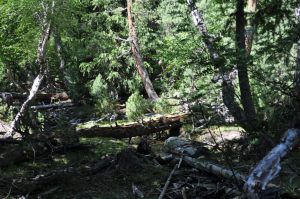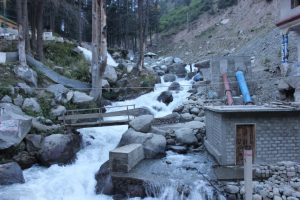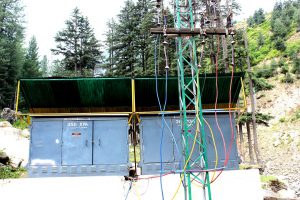People have tended to see rivers merely as cubic metres of water to be dammed and diverted, but rivers need to be understood as the complex ecosystems they are – possibly the most important ecosystems for life on land. In spite of a growing awareness that a narrow engineering approach to rivers is reductionist, a more holistic perception of rivers is yet to emerge.
From a reductionist viewpoint, the physical extent of rivers is identified by the channel through which they flow. Similarly, a river is quantified as the volume of the flow per unit time at a specific point. However, rivers play many important roles in shaping and maintaining the world’s terrestrial landmass and its biodiversity. Thus, they are crucial in creating the socio-economic-cultural spectrum of all human societies. In this way, rivers such as the Danube in Europe or the Ganga in South Asia are an inseparable part of human history.
It is not an over-statement to describe rivers as the most important environmental influence on the surface of the planet. For us to understand what rivers are, what they have been doing over the geological past, and how best to sustain their ecosystems and related services in the future, we need to recognise these multi-dimensional aspects of rivers.
This article presents the basics of such an interdisciplinary perspective for understanding rivers in relation with their environmental diversity. This is called the WEBS (Water Energy Biodiversity Sediment) perspective on river basins. No doubt, this is a first step towards developing a more holistic perspective that would ideally include the social, political, economic, literary, cultural, and other dimensions of rivers and their basins.

Rivers are naturally prone to change course. Large rivers from the Himalaya are well-known for their lateral and longitudinal shifts. Human intervention has also changed the course of rivers, drastically in some cases. In the past several millennia, extensive intervention on rivers originating in the Himalayan region, like the Yellow River, the Ganga, Indus, Amu Darya, have generated complex governance challenges. There is an urgent need for a holistic perspective to address these challenges, particularly in the Himalayan river basins. In the paragraphs below, the elements of the WEBS perspective will be introduced.
The WEBS perspective on river basins
Water:
Water flow in rivers constitutes a critical part of the global hydrological cycle. Rivers (together with lakes, wetlands, land, aquifers, and other water bodies) play the important role of transporting water after its precipitation from the sky to their respective confluence with oceans via the terrestrial land mass. Water flowing in rivers is never chemically pure. During precipitation through the atmosphere, water absorbs suspended particles and gaseous materials, a process poignantly exemplified by the phenomenon of acid rain. As the precipitated water finds its way through the terrestrial landmass in the basin, its content is further modified by land and land cover, as much it alters the physiography of that landscape itself.
During its journey, the flow absorbs organic and inorganic materials. Thus, each river starts with a chemical identity which further evolves as the water moves along its course. On the basis of the physical structure of the river bed, the chemical composition and temperature of the water – such as the sediment regime – the biological life in the water bodies emerge and evolve. The biological life in river flows, especially in the form of fish varieties, can be economically very significant for the basin. Thus, water flowing in a river basin is a complex mixture of physical, chemical and biological contents. In rivers with extensive floodplains, the inundation of the floodplain areas results in the regeneration of both surface and groundwater as well as biodiversity in parts of the basin that may be far from the main course of the river.
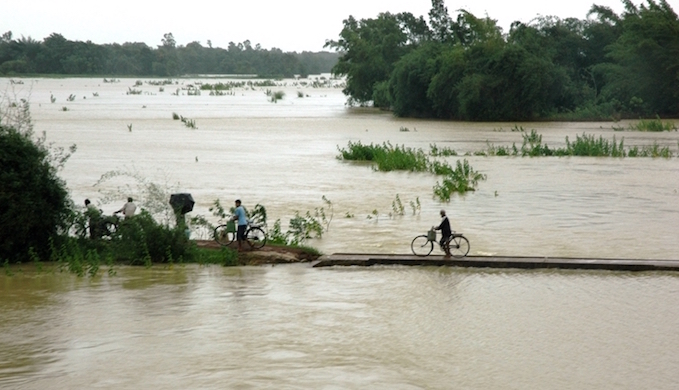
Energy
Energy is an essential constituent of river flow that facilitates its downward journey, all the way from the headwaters to the delta, coastal areas and beyond. In the upland parts, where the slope of the river bed is higher, the pull of gravity is also higher. The level of energy in the flows also determines whether the river, after passing through the upland areas, follows a braided course or forms a meander. Early forms of navigation and transportation, like floating of timber, were efficient users of the natural downward flow of rivers.
Energy from the flow of rivers has been used by people for millennia for running water mills for grinding of food grains, and to run simple machines. The textile industry in Manchester that grew during the industrial revolution, was – to start with – run by water power from rivers.
In the last two centuries the scale of extraction of energy from flows in rivers in the form of electricity has rapidly increased, in particular, in the upland parts of river basins in the industrially advanced countries. In more recent times, generation of hydropower from the Himalayan rivers has grown as the most significant human intervention. Thus, energy in flows of river has now become an important provisioning ecosystem service. In some countries, energy from rivers has become the main source of power. At the same time, extraction of energy from river flow has reduced the ability of rivers to extend other ecosystem services, like transportation of sediments, thus disrupting the ecological linkages along the course of rivers. It is, hence, important to think of energy as a basic part of river flow.
Sediment
During its downward journey from the headwaters to the delta, river flows generate, transport and deposit solids of various sizes. In many instances, such as the Eastern Himalayas, which receive very heavy summer monsoon precipitation, solids as large as a large boulder are transported. At the same time, the geologically young Himalaya also generates tiny sediments of clay. As the flow comes down to the flat areas in the floodplains and the delta, with much reduced slope of the bed, the gravitational pull also gets reduced. Where the flows slow down, the capacity of the river to carry sediments also declines, thus increasing the amount of sediments deposited, contributing to the growth of the delta. The solid contents of river flows play a crucial role in shaping the physiography of the land, fluvial geomorphology, and the formation of habitats for aquatic biodiversity in river basins.
Considering the primacy of the three processes of erosion, transportation and deposition, the river basins are divided in three parts, the uplands, the floodplains and the delta. In the event of sharp changes in the slope of a river bed at any point on its course, the dominant sediment process can change accordingly. Most of the erosion processes occur in the uplands. As the flows get to the foothills, the slope of the bed drops causing a marked reduction in the ability of the river to erode. At this stage, the flows start dropping boulders and sediments on the bed. In situations where the river extends over floodplains, they deposit silt and clay, depending on the energy content of the flows. Such processes leave the landscape rejuvenated with fertile soil and soil moisture. Such ecosystem services occur extensively in basins like that of the Nile and the Ganga-Brahmaputra-Meghna, and play a central role in supporting the agricultural economy in the floodplains.
Beyond the point of confluence of the rivers with the oceans, the transportation and deposition of sediments continue, forming the submerged delta. In the case of the GBM basin, the delta extends southwards beyond the equator, and has a length of about 3,000 km and a width of about 1,000 km.
The interplay of water, energy and sediment supports the diverse aquatic habitats along the river and related biodiversity. Sediment in rivers can be generated by natural events, like tectonic activities, landslides, etc. In the last several decades, sediment flows have been substantially altered by human interventions, like the building of roads and railways, dams, barrages, and embankments. This has trapped sediment behind infrastructure and reduced the amount of sediments being carried by the rivers to the oceans. This has affected the ecological status of many rivers, large and small. It is, hence, important to recognise and assess sediment as an integral part of water flow in river basins.
Biodiversity
From their headwaters in the mountains to their confluence with the ocean, the water, energy and sediment in river flows generate and support a great variety of aquatic habitats and biodiversity, from micro-organisms to algae to large fish. River basins are home of the richest biodiversity, especially the floodplains. Aquatic biodiversity is closely linked with the chemical composition, acidity level, and temperature of the river flow and the nature of the vegetation and animals on the banks or in the waters.
Fish have always been an important source of food for both humans and animals Human interventions have led to fundamental changes in fish varieties in almost all rivers. Several varieties of fish move from the oceans to upstream freshwater and then return downstream as part of their annual migration for spawning, such as salmon in Europe and Hilsa in South Asia. Ecologically unsustainable levels of fishing have affected the fish stocks globally. The large number of ponds, lakes, wetlands, creeks, and other water bodies in the floodplains of rivers provide a cheap high-protein diet in the form of small fish that grow in open access aquatic bodies. Biodiversity in rivers provide a source of income for many, and provide nutritional security to poorer sections of the population. Biodiversity is an indicator of the health of flowing rivers. Changes in the amount of water, the energy level of the flow or the sediment load, affects biodiversity in drastic ways.
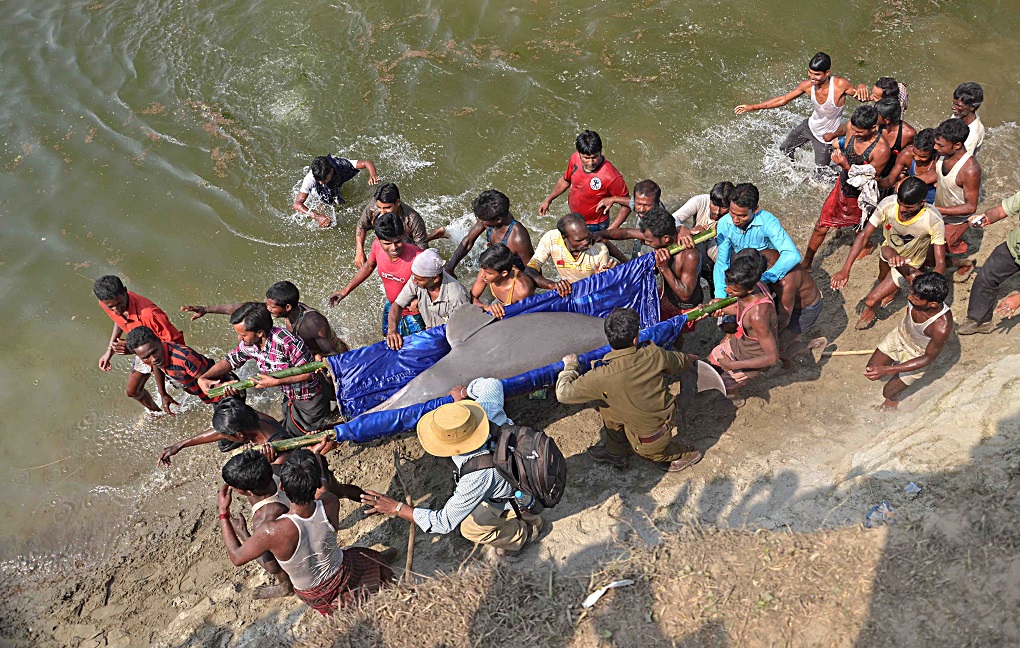
The WEBS perspective of river basins needs to be explored further to be effective. However, even the basics of such a perspective can be used to moderate the reductionist engineering approach to rivers and help develop an interdisciplinary and ecologically informed method to assess the impact of human interventions in river basins.
![<p>A boy crossing a small channel containing sewage which drains into the Indus near Choglamsar in Leh [image by: Athar Parvaiz]</p>](https://dialogue.earth/content/uploads/2018/06/13.jpg)
